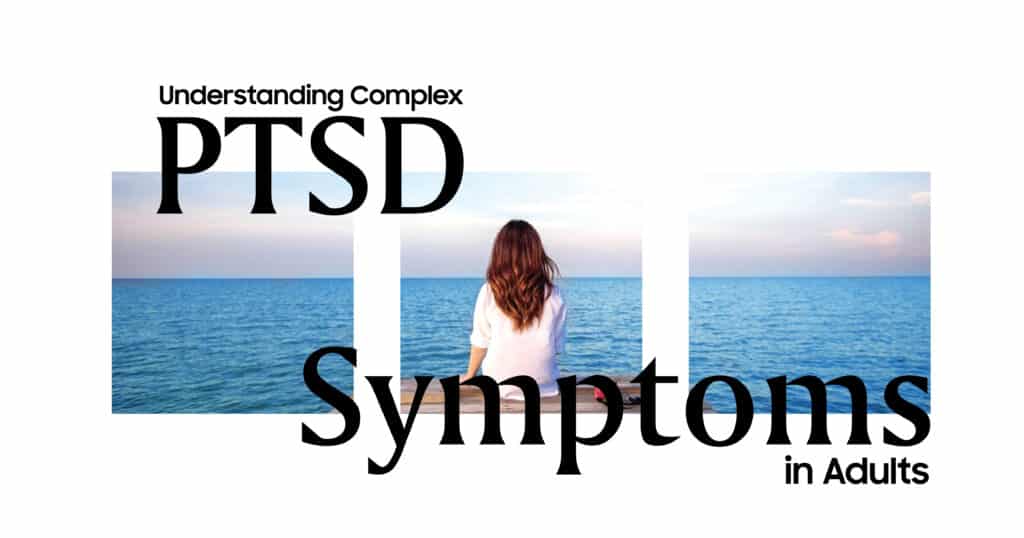Welcome to the labyrinth of complex PTSD symptoms in adults. As we navigate through the intricacies of this condition, we’ll shed light on its manifestations, triggers, and coping mechanisms. Complex PTSD, distinct from its better-known counterpart PTSD, stems from prolonged exposure to traumatic events, such as abuse or neglect. Unlike PTSD, which typically arises from a single traumatic incident, complex PTSD develops from sustained trauma, leading to a distinct set of symptoms that can significantly impact an individual’s daily life. Join us on this journey as we unravel the complexities of complex PTSD symptoms and offer guidance on navigating this challenging terrain.
Unraveling the Symptoms:What are the telltale signs of complex PTSD symptoms in adults?
1. Emotional Dysregulation: Adults with complex PTSD may experience intense and unpredictable emotions, ranging from overwhelming sadness to uncontrollable anger.
2. Hypervigilance: Constantly feeling on edge or hypervigilant is a common symptom, as individuals remain alert for potential threats, even in safe environments.
3. Difficulty Trusting Others: Due to past experiences of betrayal or abuse, adults with complex PTSD may struggle to trust others or form secure attachments.
4. Flashbacks and Dissociation: Similar to PTSD, individuals may experience intrusive memories or flashbacks of past trauma, accompanied by dissociative episodes where they feel disconnected from reality.
5. Chronic Shame and Guilt: Feelings of shame and guilt are pervasive among those with complex PTSD, often stemming from self-blame or internalized messages from abusers.
6. Self-Destructive Behaviors: Coping mechanisms such as substance abuse, self-harm, or risky behaviors may arise as individuals attempt to numb their emotional pain.
7. Difficulty Regulating Relationships: Interpersonal relationships may be fraught with challenges, as individuals struggle with boundaries, communication, and intimacy.
8. Somatization: Physical symptoms, such as chronic pain, headaches, or gastrointestinal issues, can manifest due to the physiological toll of ongoing stress and trauma.
Understanding the Triggers:What triggers complex PTSD symptoms in adults?
Navigating the triggers of complex PTSD symptoms can feel like tiptoeing through a minefield, with seemingly innocuous stimuli capable of eliciting intense reactions. Some common triggers include:
Reminders of Trauma: Anything reminiscent of past traumatic experiences, such as specific smells, sounds, or places, can trigger distressing memories or flashbacks.
Interpersonal Conflict: Conflict or confrontation may evoke feelings of vulnerability or danger, exacerbating existing symptoms of hypervigilance and emotional dysregulation.
Anniversaries or Significant Dates: Dates associated with past trauma, such as the anniversary of an abusive incident, can heighten emotional distress and trigger intrusive memories.
Loss or Rejection: Experiences of loss, rejection, or abandonment can reopen emotional wounds and intensify feelings of shame or unworthiness.
Stressful Life Events: Significant life changes or stressors, such as job loss, divorce, or financial instability, can amplify existing symptoms and overwhelm coping mechanisms.
Coping Strategies and Treatment Options: How can adults cope with complex PTSD symptoms?
While navigating complex PTSD symptoms can feel like traversing treacherous terrain, there are effective coping strategies and treatment options available to support recovery and promote healing:
Therapy: Engaging in trauma-focused therapy, such as cognitive-behavioral therapy (CBT), dialectical behavior therapy (DBT), or eye movement desensitization and reprocessing (EMDR), can help individuals process traumatic memories, regulate emotions, and develop healthy coping mechanisms.
Medication: In some cases, medication may be prescribed to manage symptoms of depression, anxiety, or sleep disturbances associated with complex PTSD.
Self-Care Practices: Incorporating self-care activities, such as mindfulness meditation, yoga, or journaling, can provide grounding and promote emotional regulation.
Support Networks: Building a strong support network of friends, family, or support groups can offer validation, empathy, and practical assistance during difficult times.
Lifestyle Modifications: Prioritizing healthy lifestyle habits, such as regular exercise, nutritious eating, adequate sleep, and stress management techniques, can support overall well-being and resilience.
FAQs:
Can complex PTSD symptoms improve over time?
While complex PTSD symptoms can be chronic and enduring, with proper treatment and support, individuals can experience significant improvement in their symptoms and quality of life over time. Healing from complex PTSD is a gradual process that requires patience, persistence, and compassionate self-care.
Is complex PTSD the same as borderline personality disorder (BPD)?
While there may be overlap in symptoms, complex PTSD and borderline personality disorder (BPD) are distinct clinical diagnoses with unique etiologies and treatment approaches. Complex PTSD arises from prolonged exposure to traumatic events, whereas BPD is characterized by pervasive patterns of instability in mood, self-image, and interpersonal relationships.
Can complex PTSD symptoms manifest differently in men and women?
While the core symptoms of complex PTSD are similar across genders, societal expectations and gender roles may influence how symptoms are expressed and perceived. For example, men may be socialized to suppress emotions or exhibit anger as a primary coping mechanism, while women may be more likely to internalize feelings of shame or guilt.
Conclusion
In conclusion, unraveling the complexities of complex PTSD symptoms in adults requires a nuanced understanding of trauma’s far-reaching effects on the mind, body, and spirit. By acknowledging the unique challenges faced by individuals with complex PTSD and providing compassionate support and effective treatment options, we can pave the way for healing and resilience. Remember, recovery is not a linear journey, but with patience, perseverance, and support, healing is possible.





